LPG subsidy for the poor to help avert deforestation
Scheme of piped LPG networks may be substituted with subsidised distribution in cylinders.

Empty Liquefied Petroleum Gas (LPG) cylinders are seen at a gas distribution centre. PHOTO: REUTERS
Some 24 schemes are being planned. The idea and intention is good and is to be appreciated, however, the approach and methodology does not appear to be attractive and viable.
In an earlier article, I examined an alternative approach to distributing truck-transported LNG and opting for off-grid networks, which are used in many countries. In this space, I will explore another option ie LPG cylinder distribution under a subsidy scheme.
Only 20% of households in Pakistan have access to a clean and convenient cooking fuel like piped natural gas. Another 1.5 million households have access to LPG cylinders, which leaves most of the country unsupplied, except for the major urban areas.
Two LPG vessels turned away, shortage feared
Thus, the idea of supplying some kind of clean fuel at affordable prices should be received with sympathy and affection.
There are two types of LPG subsidies involved in the proposed scheme. First, LPG priced at $9 per million British thermal units (mmbtu, free on board Saudi Arabia) and the other at $13 per mmbtu at site, which would be supplied to consumers at a tariff of about $2.8 per unit. The latter is the most widely applied tariff for small domestic users which are in the majority.
The deficit would be covered through cross-subsidies, meaning that other category of natural gas consumers would be charged higher to make up for this shortfall. Industry may not like it, but they should understand that it would ultimately benefit them if the workforce is able to cook its food without polluting his home and endangering his and his family’s health. Industries do not grow in a vacuum on the back of half-fed populace.
Those industries and societies whose competitiveness is built and based on inhuman living conditions do not last or prosper very long and perish.
A rare possibility
LPG is more efficiently distributed in cylinders worldwide. I do not know of a country where schemes of LPG distribution through pipes are in place as proposed and being implemented by the government.
There are apartment complexes and gated societies where such contrivance is used. But it is rare that LPG is distributed through piped networks to whole towns having several thousand customers.
Costs should be presumably higher and more safety risks are involved. One usually finds leaking gas outside and inside houses. But it is natural gas which being lighter goes up and is diluted to safe levels in the atmosphere.
LPG has heavier molecules and tends to reside and flow close to the ground after it has the opportunity to leak. Thus, it is more susceptible to combustion and explosion. The proposed scheme tends to cater to the elite who in their big houses would like to have piped gas and not cylinders. The poor may still be outside the periphery in which the LPG distribution network would be laid. The poor is spread out much more widely. Look at Balochistan, where population dispersion is so wide that it may not be even possible to take electric wires, not to talk of LPG pipe which is even more difficult.
However, I am a bigger supporter of supplying LPG to as many people and localities and to the poor at a subsidised rate. India spends $2 per capita on LPG subsidies. Here one cylinder per month per household is supplied under subsidy schemes. The subsidy depending on poverty levels could vary from 50% to 100%, meaning that some eligible users may get one cylinder per month literally free.
I would propose an LPG subsidy scheme of $100 million per year to be partly financed out of budget and partly out of cross-subsidy with the natural gas sector.
Government companies such as PSO and PPL may import LPG under this scheme, which would enable them to import something like 250,000 tons in a year at the prevailing rate of around $400 per ton. This would mean about 21 million cylinders per year or 1.75 million cylinders per month.
In comparison, it has been estimated that there is a current demand for 90,000 tons per month in summer and 115,000 tons in winter, out of which 40% goes to domestic consumers.
Almost a year on, govt fails to set LPG prices
PPL and PSO would get it free under the $100 million per year subsidy and would receive filling, transportation and handling charges. Eligible poor households will have to get registered with an exclusive distributor appointed by PSO and PPL, possibly to be centrally computerised utilising the NADRA system.
There is always a possibility of misuse and abuse as has happened in India. Some misuse is to be tolerated.
However, there are other ways of passing on this targeted subsidy, which included directly transferring a monthly amount of subsidy to the accounts of registered users, but on the placement of order to the local distributor, so that the targeted subsidy is utilised for the purpose it is meant for.
The system is reporting well in India. We can adopt variants that are suited to our conditions. It is expected that one would be able to supply one LPG cylinder at a subsidised price of Rs300-400 and provincial and federal governments may be required to share subsidies under some formula. The current unsubsidised price is around Rs1,000 per cylinder (0.531 mmbtu or 11.8kg, $18.83 per mmbtu).
Initially, the target should be the northern areas including rural parts of Balochistan, Khyber-Pakhtunkhwa, Fata, Azad Jammu and Kashmir, Gilgit-Baltistan and Chitral.
LPG for heating and cooking is a necessity in those parts of the country, although the cold is so much in those regions that no amount of subsidised LPG may be enough.
However, cooking needs can be covered under the scheme by providing one cylinder per month. The public benefit of this subsidy in addition to the improvement in living conditions of people would be lesser tree-cutting.
Deforestation
LPG supplies under the proposed subsidy scheme will reduce deforestation, which has been fast eroding forest cover in the country. Current deforestation rate is 1.63-2.1% per year which is the highest in Asia.
As per erstwhile Millennium Development Goal, Pakistan was required to increase forest cover from 2.5% to 6% by the year 2015. It may be possible to attract international funding towards the proposed LPG subsidy scheme focussed on reducing deforestation (REDD). It would be relevant to quote from a kfW study.
“In studies of villages in the Himalayan region of India carried out among communities where LPG use had been encouraged by government action, fuel wood use decreased from 475 kg per capita per year in 1980-85 to 46 kg per capita per year in 2000-05, suggesting that LPG can play a very significant role in forest preservation in a low-income environment.
“Energy savings from total fuel wood requirements for cooking in these villages were estimated to be as high as 70% in lower level Himalayan altitudes, but considerably less in the higher altitude regions with considerably less LPG usage and greater heating needs.”
Concluding, it may be worth re-examining the existing LPG scheme of piped networks and substitute it by the proposed subsidised LPG distribution in cylinders.
The writer was member energy at Planning Commission until recently
Published in The Express Tribune, August 21st, 2017.
Like Business on Facebook, follow @TribuneBiz on Twitter to stay informed and join in the conversation.

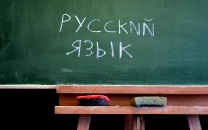
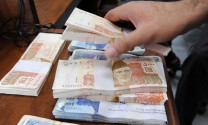
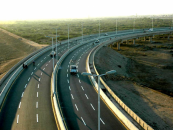


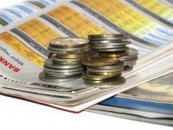





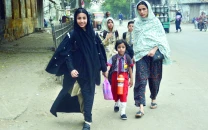






COMMENTS
Comments are moderated and generally will be posted if they are on-topic and not abusive.
For more information, please see our Comments FAQ